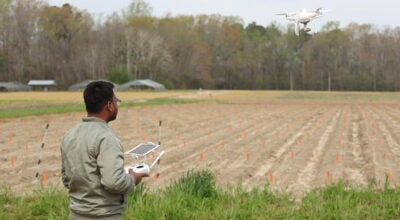Wild azalea survives to impress
Published 10:40 pm Monday, April 29, 2013

John Bright shows the pinxter growing in his backyard. The plant is a wild azalea, native to a broad section of the eastern United States, from which the popular modern plant was bred.
In the dead of winter about 20 years ago, John and Faye Bright had their Sadler Heights block cleared to build a home.
The workmen, who were instructed to clear out to a certain, specific distance, leaving bush beyond, laid down their tools just in time.
These days, right on the lawn’s edge, a native plant from which azaleas were bred lights up the backyard with pink blooms every spring.
One foot more and it would have been lost.
John Bright, an 82-year-old Air Force veteran who also worked in electronics at Norfolk Naval Shipyard, said they only recently learned the name of the plant.
“We didn’t know it until last year,” he said.
Vera Bright, 76, an Alzheimer’s sufferer and retired schoolteacher whom her husband now visits every morning in a nursing home, had long wondered about it.
Noticing a few different apparently native blooms in their yard, backing onto Sadler Lake, she had gotten a copy of the National Audubon Society Field Guide to North American Wild Flowers.
They picked out lady’s slipper and wild ginger, but identification of what turned out to be a pinxter proved elusive, John Bright said.
Just recently, however, the couple’s daughter-in-law, Faye Bright, “got so curious about it” she took a cutting to Main Street Lowe’s.
Horticulturalist Catherine Lopez made the connection.
“I just thought it was a rare and beautiful thing,” Lopez said.
John Bright has been bringing Lopez pictures of the plant in its various stages of bloom. She says she plans to see it firsthand soon.
“The size of it is really impressive,” Lopez said, adding, “You probably see more rhododendrons and other native azaleas more in the mountains then down here.”
Bright said, “I saw it all the time, but I never had any idea what it was.”






